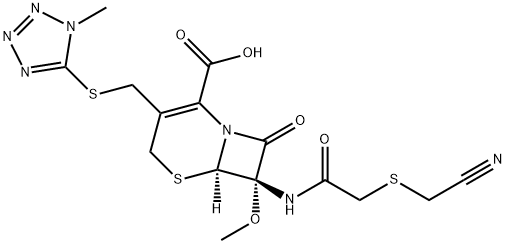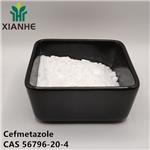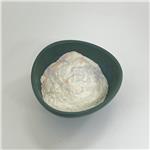Cefmetazole is a cephamycin with a nonaromatic side chain at C-7. In addition to a fairly characteristic
second-generation cephalosporin antimicrobial spectrum, it possess fairly significant anti-antiaerobic
activity. The ejection of its C-3 side chain leads to alcohol intolerance of the disulfuram type and prolonged
clotting times.
Cefmetazole was synthesized by Sankyo Co. in 1976starting with a biosynthetic cephamycin. It shows excellent activity against Serratia and Proteus, against which cefazolin is not active, and it has stronger activity than cefoxitin, another derivative of cephamycin. Cefmetazole is active against anaerobes and resistant to β-lactamase, but it is not active against Pseudomonas aeruginosa.
A broad spectrum second generation cephalosporin antibiotic
Semi-synthetic antibiotic derived from Cephamycin. Antibacterial.
ChEBI: A cephalosporin antibiotic containg an N1-methyltetrazol-5-ylthiomethyl side-chain at C-3 of the parent cephem bicyclic structure.
It is active
against Pr. mirabilis, Pr. vulgaris, Morganella morganii, Yersinia spp.and most anaerobes. S. marcescens is moderately susceptible,
but Ps. aeruginosa and E. faecalis are resistant. It is active against
Mycobacterium fortuitum and some strains of M. chelonei. It is
resistant to a wide range of β-lactamases.
The serum concentration at the end of a 1 g intravenous
infusion is around 77 mg/L. Plasma protein binding is 68%. It
is principally excreted in the urine with a plasma half-life of c.
1.3 h; 70% is recovered over the first 6 h. In patients whose
creatinine clearance is less than 10 mL/min, plasma levels are
elevated and the plasma half-life is increased to around 15 h.
Side effects associated with the methylthiotetrazole group
at position C-3 have been reported. Uses are similar to those
of cefoxitin, but it is not widely available.



